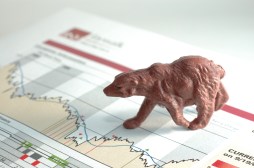Top 5 Critical Distinctions Between Bull and Bear Markets

Understanding the dynamics of financial markets is essential for investors, analysts, and anyone interested in economic trends. Two fundamental concepts that frequently arise in market discussions are bull markets and bear markets. Recognizing the differences between these two types of market conditions can help individuals make informed investment decisions and better navigate their financial strategies.
Defining Bull Markets
A bull market typically refers to a prolonged period during which asset prices rise or are expected to rise. This phase is characterized by heightened investor confidence, increased buying activity, and optimism about future performance. Bull markets can be influenced by various factors, including positive economic indicators, low unemployment rates, and overall consumer confidence.
Understanding Bear Markets
Conversely, a bear market represents a period of declining prices in the financial markets. This condition often reflects pessimism among investors regarding the future performance of assets. Bear markets may emerge due to adverse economic indicators, rising unemployment rates, or geopolitical instability that negatively impacts investor sentiment.
Market Sentiment Dynamics
The sentiment surrounding bull and bear markets plays a crucial role in driving market behavior. In bull markets, positive sentiment encourages more investors to enter the market as they anticipate continued growth. In contrast, during bear markets, fear often prevails as investors tend to sell off assets to avoid losses or protect their capital from further declines.
Investment Strategies in Different Market Conditions
Investors may adapt their strategies based on prevailing market conditions. In a bull market environment, strategies focusing on growth stocks or other high-risk investments may be more common as individuals seek higher returns capitalizing on rising prices. Conversely, during bear markets, many investors might pivot towards safer investments such as bonds or defensive stocks designed to withstand downturns while preserving capital.
Economic Indicators Influencing Market Trends
Both bull and bear markets are influenced by various economic indicators that signal changes in financial health or investor sentiment. Analysts monitor trends such as GDP growth rates, inflation levels, interest rates, and corporate earnings reports that can provide insights into whether the economy is strengthening (bull) or weakening (bear). By understanding these indicators alongside broader economic contexts, individuals can enhance their investment acumen.
In conclusion, recognizing the key differences between bull and bear markets is vital for anyone involved in investing or finance. By being aware of how these two distinct phases influence behavior within the marketplace—along with related strategies—investors can make better-informed decisions tailored to current conditions.
This text was generated using a large language model, and select text has been reviewed and moderated for purposes such as readability.











